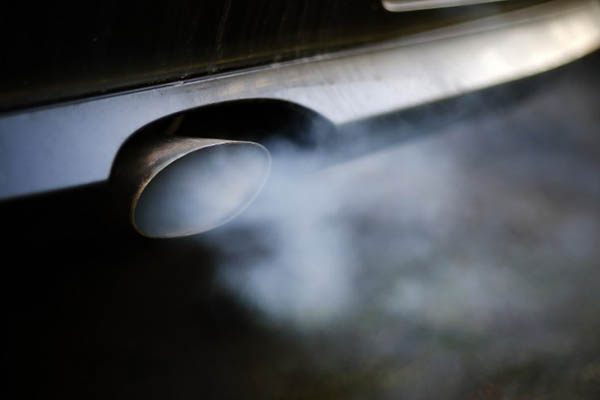
File photo. Ina Fassbender-DPA—AFP
Judicial commission on environment says vehicular emissions continue to be responsible for over 40% of air pollution in Punjab capital
Over the past two weeks, Lahore has consistently ranked among the world’s most polluted cities, often posting ‘very unhealthy’ to ‘hazardous’ values on the Air Quality Index (AQI).
The smog that has cast a near-permanent haze on the provincial capital of Punjab has left citizens struggling to breathe, especially troubling children and the elderly, prompting the government to declare it a ‘calamity’ and announce a three-day weekend in a bid to cut vehicular and industrial emissions. On Wednesday, the Lahore High Court took things further, warning authorities to prepare for a one-week climate emergency “lockdown” if the situation cannot be brought under control.
“Vehicle emissions cause 43-45% air pollution,” Justice (retd.) Ali Akbar Qureshi, who heads a judicial commission tasked with recommending steps to control smog, told Newsweek. Noting that the provincial government had managed to reduce industrial emissions and crop stubble burning—two more contributors to air pollution—he said that the persistence of smog suggested more work was needed to curb vehicular pollution.
Regretting the provincial government’s slow uptake of measures to control smog, he said the commission had decided to adopt a “zero tolerance” stance toward vehicular emissions. “We have run out of options now, with only the impounding of vehicles emitting hazardous smoke left,” he said, adding that teams formed by the commission had started to confiscate such vehicles citywide.
As a last resort, said Qureshi, the commission had proposed that the court order the closure of all educational institutions and offices in the provincial capital for one week. This, he claimed, would help reduce the smog crisis to a great extent. “Official data shows that hospitals in Lahore have treated several patients for heavy exposure to hazardous air, which is causing health complications such as asthma, lung damage, bronchial infections, strokes, heart problems, and shortened life expectancy,” he added. The Global Alliance on Health and Pollution estimates that over 100,000 Pakistanis die every year due to air pollution-related illnesses.
Commission’s findings
According to the report submitted by the commission to the LHC, it inspected 6,277 brick kilns across Punjab, shutting down 336 facilities that had not been upgraded with zig-zag technology. Additionally, 865 brick kiln owners have been arrested for endangering the environment, and fines of Rs. 47 million have been imposed on them.
The commission has also imposed Rs 6.5 million in fines on vehicles emitting hazardous smoke; Rs. 10.2 million on farmers burning crop stubble; and shut down 481 industrial units.
During Wednesday’s proceedings, the court rejected a report submitted by the Environment Protection Department that claimed the smog situation had improved in the past week and would continue to improve in the coming days. Justice Shahid Kareem observed that smog continued to engulf not only Lahore, but all its surrounding areas, and other cities of the province were also being ranked among the most polluted in the world.
A senior official of the Punjab Disaster Management Authority urged the court to grant it one week to take strict actions to ensure improvement of air quality after which the hearing was adjourned.
On Wednesday, Lahore’s Air Quality Index remained above 200, or “very unhealthy”, with PM2.5 concentration over 40 times higher than the World Health Organization’s annual air quality guidelines. The worst quality recorded within city limits was at Kot Lakhpat with an AQI of 479; followed by 407 at Bahria Orchard; 396 at Model Town; and 364 at Township.
PM2.5 refers to atmospheric particulate matter that has a diameter of less than 2.5 micrometers, so small that they can only be detected with an electron microscope. These fine particles, which can come from various sources including power plants, motor vehicle emissions, and agricultural burning, last longer in the air than heavier particles. This increases chances of them being inhaled by humans and animals, where they can bypass the nose and throat and penetrate deep into the lungs.
